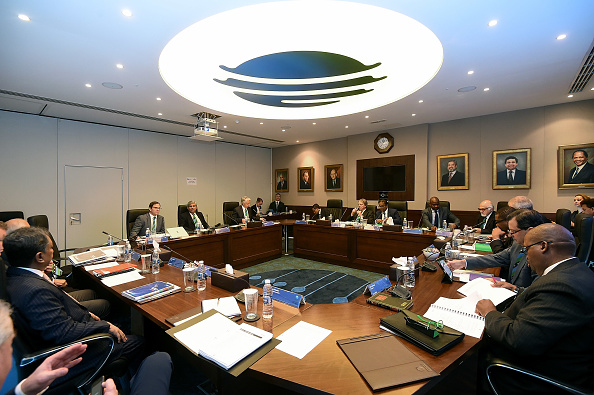ICC Cricket Committee bats for DRS in all T20 Internationals

Getty Images
The influential 15-member ICC Cricket Committee held its annual meeting in London on May 23 and 24 and put forth a major recommendation of using DRS in all T20 International matches. There were a series of additional recommendations that can revolutionize the game if the Committee approves of them.
The ICC Cricket Committee consisting of Clare Connor, Rahul Dravid, Adrian Griffiths, Mahela Jayawardene, David Kendix, Richard Kettleborough, Darren Lehman, Ranjan Madugalle, Tim May, Kevin O'Brien, Shaun Pollock, John Stephenson, Andrew Strauss, David White and chaired by India's head coach Anil Kumble, made a host of recommendations with the most important one being the implementation of DRS in all T20 Internationals, reported Business Standard.
Despite varying views on the use of DRS since its inception in 2008, it has found success in its function and implementation. The BCCI, though an ardent opponent of this technology for long, eventually decided to implement it on a ‘trial basis’ in the India-England Test series and eventually followed it in the Border-Gavaskar Trophy as well.
Apart from the decision to use DRS in all T20i matches, the other recommendation that the teams will not lose a review when an LBW review comes back as Umpire's Call found consensus. However, if that is adopted, the 80 over top-up of reviews in Test cricket would be discontinued. This would also mean that the team will be left with just two reviews for the entire innings, while teams would continue to have one review per limited-overs innings.
There was also unanimous support for the implementation of a Test cricket competition as well as the introduction of cricket in Olympics, citing that it was crucial for International cricket in the long-run.
According to one of the recommendations, the umpires are given the power to send off a player for serious misconduct such as violence on the field. All other offenses would come under the scheme of the ICC Code of Conduct. The other recommendations made in accordance with the Code of Laws include an official limit on the thickness of bats, in order to strike a balance between bat and ball. The new maximum permitted dimensions of a cricket bat will be 108mm in width, 67mm in depth with 40mm edges.
After a presentation on the findings of the 'No Ball' trial held in England during the ODI series against Pakistan last year was given to the committee, it was recommended that the third umpire should call all no balls in international matches using instant replays. The third umpire can now access "four side-on cameras, used for checking no balls, run outs and stumpings, along with instant slow motion replays to determine whether a bowler has overstepped the popping crease", the ICC said.
Kumble concluded, "We have had a wonderful couple of days discussing cricket issues and there are a number of highlights. The first is around the structure of international cricket and the committee unanimously recommended that context in the international game is paramount and we welcome the new structure. The second is around the new laws of the game introduced by the MCC and we have adopted the majority of those including the size of the bats and this will help the balance between bat and ball."
If the ICC Chief Executives' Committee approves the recommendations, the new rules will come into effect from October 1, 2017.
Did you know, Rahul Dravid holds a unique record of never getting out for a Golden duck in the 286 Test innings which he has played.
For more fun stats and predictions play the newest fantasy-cum-predictions game in the market – Nostragamus. Download the game by tapping here.
